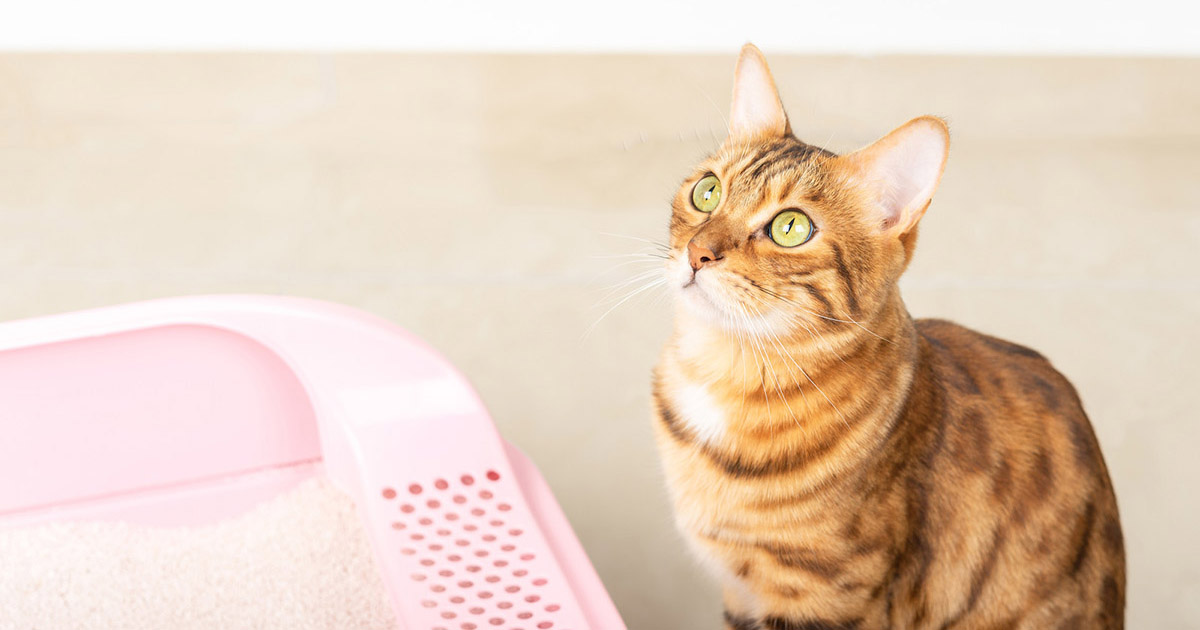Reasons Flushing Cat Poop Down Your Toilet Is Bad - Suggestions for Proper Handling
Reasons Flushing Cat Poop Down Your Toilet Is Bad - Suggestions for Proper Handling
Blog Article
The article below relating to How to Dispose of Cat Poop and Litter Without Plastic Bags is immensely remarkable. Read it yourself and decide what you think of it.

Intro
As pet cat proprietors, it's essential to be mindful of how we take care of our feline pals' waste. While it may appear convenient to flush feline poop down the commode, this method can have damaging consequences for both the environment and human health and wellness.
Ecological Impact
Purging pet cat poop introduces dangerous microorganisms and parasites into the water system, posing a significant threat to aquatic communities. These impurities can adversely influence aquatic life and concession water quality.
Health and wellness Risks
In addition to environmental problems, purging cat waste can additionally pose health threats to human beings. Pet cat feces may consist of Toxoplasma gondii, a parasite that can cause toxoplasmosis-- a possibly serious disease, specifically for expecting ladies and people with damaged body immune systems.
Alternatives to Flushing
The good news is, there are safer and much more responsible methods to throw away pet cat poop. Think about the adhering to options:
1. Scoop and Dispose in Trash
One of the most common method of throwing away feline poop is to scoop it into an eco-friendly bag and throw it in the trash. Make certain to utilize a dedicated litter scoop and dispose of the waste immediately.
2. Usage Biodegradable Litter
Choose eco-friendly feline litter made from products such as corn or wheat. These trashes are environmentally friendly and can be securely gotten rid of in the garbage.
3. Hide in the Yard
If you have a lawn, take into consideration burying cat waste in a designated location away from vegetable gardens and water sources. Make sure to dig deep adequate to stop contamination of groundwater.
4. Install a Pet Waste Disposal System
Invest in a pet waste disposal system especially developed for cat waste. These systems make use of enzymes to break down the waste, reducing odor and ecological effect.
Verdict
Accountable pet ownership expands beyond offering food and shelter-- it additionally includes appropriate waste monitoring. By refraining from purging cat poop down the toilet and opting for different disposal approaches, we can decrease our environmental footprint and secure human health and wellness.
Why Can’t I Flush Cat Poop?
It Spreads a Parasite
Cats are frequently infected with a parasite called toxoplasma gondii. The parasite causes an infection called toxoplasmosis. It is usually harmless to cats. The parasite only uses cat poop as a host for its eggs. Otherwise, the cat’s immune system usually keeps the infection at low enough levels to maintain its own health. But it does not stop the develop of eggs. These eggs are tiny and surprisingly tough. They may survive for a year before they begin to grow. But that’s the problem.
Our wastewater system is not designed to deal with toxoplasmosis eggs. Instead, most eggs will flush from your toilet into sewers and wastewater management plants. After the sewage is treated for many other harmful things in it, it is typically released into local rivers, lakes, or oceans. Here, the toxoplasmosis eggs can find new hosts, including starfish, crabs, otters, and many other wildlife. For many, this is a significant risk to their health. Toxoplasmosis can also end up infecting water sources that are important for agriculture, which means our deer, pigs, and sheep can get infected too.
Is There Risk to Humans?
There can be a risk to human life from flushing cat poop down the toilet. If you do so, the parasites from your cat’s poop can end up in shellfish, game animals, or livestock. If this meat is then served raw or undercooked, the people who eat it can get sick.
In fact, according to the CDC, 40 million people in the United States are infected with toxoplasma gondii. They get it from exposure to infected seafood, or from some kind of cat poop contamination, like drinking from a stream that is contaminated or touching anything that has come into contact with cat poop. That includes just cleaning a cat litter box.
Most people who get infected with these parasites will not develop any symptoms. However, for pregnant women or for those with compromised immune systems, the parasite can cause severe health problems.
How to Handle Cat Poop
The best way to handle cat poop is actually to clean the box more often. The eggs that the parasite sheds will not become active until one to five days after the cat poops. That means that if you clean daily, you’re much less likely to come into direct contact with infectious eggs.
That said, always dispose of cat poop in the garbage and not down the toilet. Wash your hands before and after you clean the litter box, and bring the bag of poop right outside to your garbage bins.
https://trenchlesssolutionsusa.com/why-cant-i-flush-cat-poop/

I am very intrigued by How to Dispose of Cat Poop and Litter Without Plastic Bags and I am assuming you enjoyed the post. Make sure you set aside a second to promote this blog if you liked it. I praise you for your time. Don't forget to visit our blog back soon.
Click Here Report this page